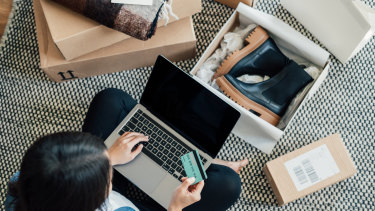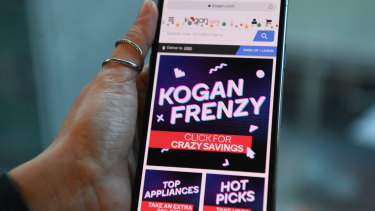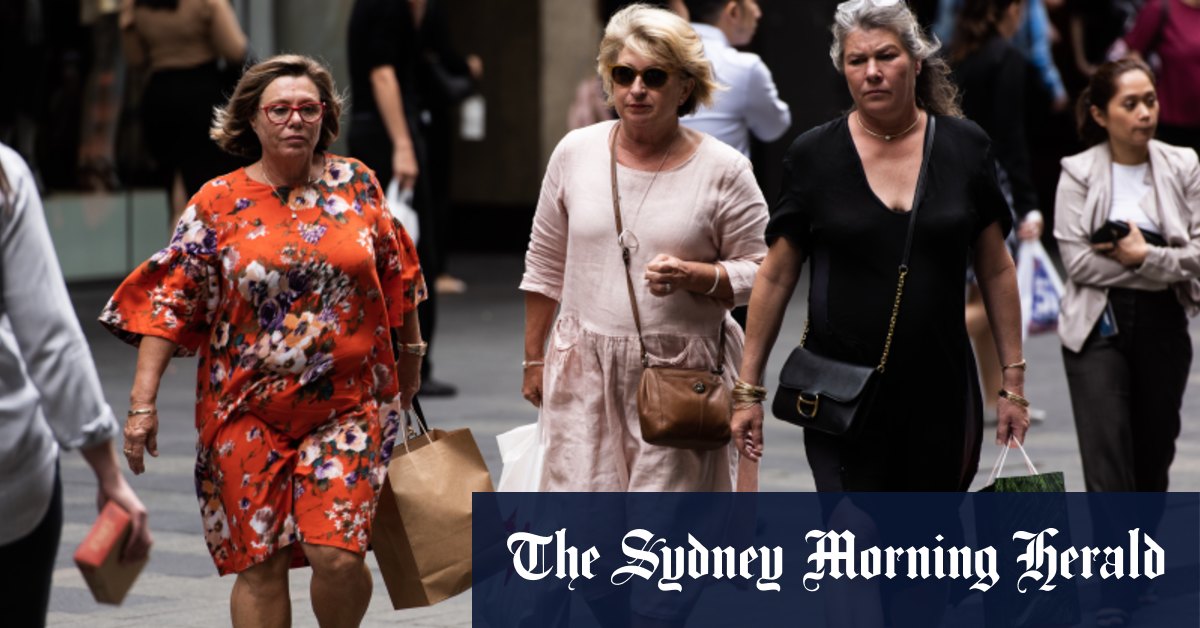Experts and analysts have been left to reconcile the recent retail exuberance with the storms that many, including the nation’s treasurer, are predicting.
This week’s consumer price index figures showed new dwellings and fuel are contributing most to the inflationary environment, but the price of goods is also rising faster than services, up 2.6 per cent for the quarter.
The CPI figures may have been lower than forecast, but they still clearly outline the cost-of-living pressures Australians are feeling.
Categories that benefited enormously from COVID lockdowns, such as furnishings and household equipment, are having some of the biggest price jumps.
Jarden retail analyst Ben Gilbert says the spending of the past few months has been driven by happier economic conditions.
“The last quarter or so of trading has been very strong. That is due to pent-up demand, strength of the housing market and significant price increases [for products]. You wrap all of that up, and spending has remained pretty resilient,” he said.
loading
Those trends won’t be around forever, though.
“We are going to have a few more months of falling house prices. Then you are going to have people get their utility bills, and you have the risk that the government takes off the fuel excise discount,” Gilbert said.
Oscar Oberg, portfolio manager at Wilson Asset Management, agrees there is some weakness coming for the sector. But investor expectations have been low, and consumer stocks were sold down towards the end of last year, meaning there is room for companies to surprise.
“We think it could be quite a good period for retail given share prices have significantly corrected and are predicting a very negative outcome, so you have to put that into context,” he said.
Consumer electronics businesses such as JB Hi-Fi and Harvey Norman had been clear winners during lockdowns, when Australians rushed to buy home office equipment and entertainment products. Now it’s about looking at which companies did not benefit from coronavirus lockdowns, Oberg says.
“It’s now about those companies who are exposed to ‘going out’ apparel – dresses, suits, jackets and that kind of retail.”
“I would say companies like Universal Store [could benefit] – where they are exposed to clothing for people aged 18-30. Lovisa as well, it is a fast fashion jewelery retailer that is going well and is a global business.”
Old habits die hard
Australians have been feeling cost-of-living pressures for months. Petrol prices have been an issue since before the last federal election, when the then-Morrison government temporarily cut the fuel excise.
Mortgage holders have been hearing warnings of interest rate rises earlier in 2022, with the Reserve Bank of Australia making its first move on an increase in June.

Some consumers have kept up the habit of shopping via online or on social media after doing so for the first time during the pandemic. Credit:Getty
Throughout this time, strong retail figures kept filtering through. Australian Bureau of Statistics figures showed spending hit record highs in May at $34.2 billion – a figure which stayed steady for June.
Gilbert says it will take a bit of time for economic challenges to filter through to consumer mindsets.
“It takes people a little bit longer to curb their spending at the moment. It will probably just take people a bit of time to come to the realization [of these rising costs],” he said.
loading
McKinsey & Company have also been tracking how Australians have emerged from lockdowns. While there is caution about the path back from COVID-19 disruptions, researchers found people have been planning to spend in ways they might not have been able to previously.
A McKinsey report on consumer behavior this week showed a bounceback in consumers’ intent to spend in areas such as apparel, flights and out-of-home entertainment in the next two to three months.
Associate partner at McKinsey & Company Abe Levavi said shoppers are showing a tendency to maintain the online shopping habits they built during lockdowns.
There’s also room for the “omnichannel” trend to grow, where customers connect with companies online and in-store, often planning their purchases online first.
“We looked at customers who are purchasing directly from social media. From before the pandemic that has grown by 15 per cent, which is quite a large number. Eighty five per cent of customers who are making these purchases directly from social media say they intend to continue doing that,” he said.
Hints of a slowdown
Shares in online marketplace Kogan.com surged by more than 45 per cent on Thursday after the company delivered a trading update, but its numbers showed that the big growth it had during the pandemic was slowing down.
Kogan confirmed it expects gross sales to be flat on last year, growing by 0.1 per cent, while profits were 9.4 per cent lower.

Kogan shares jumped this week but profits dropped. Credit:Peter Braig
Other hints of a slowdown also emerged in Australia and overseas this week. ABS retail trade figures did not show an overall decline in June compared with May, but some categories dipped. Spending in retail stores fell 3.7 per cent after a big surge, while household goods sales were down 0.3 per cent.
Meanwhile, US retail giant Walmart issued a profit warning, with chief executive Doug McMillon saying “increasing levels of food and fuel inflation are affecting how customers spend”.
loading
Tough conditions indicate discounting is to come as the company looks to clear stock – which has a flow-on effect for profits.
Morningstar analysts saw Walmart’s trading update as a signal of what’s to come.
“We see the warning signs that we’re seeing in the US, just like everyone else, and we think the writing is on the wall,” Morningstar’s Johannes Faul said in a video update this week.
“The momentum we see is going backwards and that spells trouble for earnings in the consumer discretionary market.”
The Business Briefing newsletter delivers major stories, exclusive coverage and expert opinion. Sign up to get it every weekday morning.
